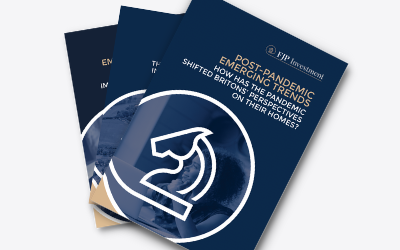Mortgage Rates Drop Below 4%
The UK mortgage market is buzzing as rates below 4% return, a milestone not seen since November 2024, according to a BBC article published on April 27, 2025. Major lenders are cutting rates, sparking a competitive “mini price war” that offers hope for first-time buyers and remortgagers. However, experts warn of hidden risks in an uncertain economic climate. This article explores the resurgence of sub-4% mortgages, the drivers behind this trend, the challenges borrowers face, and strategies to navigate the market.
Sub-4% Mortgages Ignite Optimism
Mortgage rates dipping below 4% are breathing new life into the UK housing market. Lenders like Barclays and Coventry Building Society have introduced fixed-rate deals as low as 3.89% for two-year terms, following earlier cuts by Santander and Nationwide. This marks the first time since February 2025 that such low rates have been widely available.
The surge in competition among lenders is driving these attractive offers. Experts describe this as a “positive step” for borrowers grappling with high borrowing costs. But what’s behind this shift, and who can capitalize on these deals?
What’s Driving Lower Rates?
The decline in mortgage rates stems from expectations of Bank of England (BoE) base rate reductions. The BoE’s current base rate of 4.5% is anticipated to drop, with a potential cut on May 8, 2025. Lenders are proactively lowering rates, buoyed by stable swap rates—the financial metrics that shape mortgage pricing.
Global economic pressures, notably US trade tariffs proposed by President Donald Trump, are also fuelling predictions of more aggressive BoE rate cuts to spur growth. This competitive landscape is encouraging lenders to roll out compelling deals, though significant hurdles remain for borrowers.
Who Qualifies for Sub-4% Mortgages?
Sub-4% mortgages come with strict eligibility requirements. These deals typically demand a low loan-to-value (LTV) ratio, often 60% or 65%, requiring a deposit of 35-40% of the property’s value. For instance, Coventry’s 3.89% two-year fix requires a 65% LTV and a £999 fee, while Barclays’ 3.99% deal carries an £899 fee.
First-time buyers, often limited by smaller deposits, may struggle to access these offers. Remortgagers face similar challenges, as many sub-4% deals are restricted to home purchases rather than refinancing. Borrowers must carefully assess fees and criteria to determine if these deals are worthwhile.

The Risks of Short-Term Fixes
While sub-4% rates are tempting, assuming rates will keep falling is risky. Experts warn that global trade disruptions, such as Trump’s tariffs, could halt the downward trend. The BoE’s March 2025 decision to maintain rates at 4.5% was driven by inflation concerns tied to National Insurance hikes and minimum wage increases.
Borrowers opting for two-year fixes could face higher rates when their term expires, especially if economic conditions deteriorate. This “roulette wheel” strategy leaves borrowers vulnerable to unexpected rate spikes, making short-term deals a gamble.
Remortgaging Challenges
Homeowners remortgaging are grappling with a tough reality as older, low-rate deals expire. Those rolling off fixed-rate mortgages with rates below 3% face significantly higher payments, putting pressure on household budgets. The transition to current market rates is a stark financial shift.
To mitigate this, some remortgagers are locking in new deals months in advance, securing rates while retaining the option to switch to better offers if they arise. Delaying action could lead to falling onto a costly standard variable rate (SVR), which significantly increases monthly payments.

Are Longer-Term Fixes the Answer?
Longer-term fixes, such as 10- or 15-year deals, are gaining traction for their stability. These mortgages offer payment certainty, making them ideal for families wary of rate fluctuations. Some lenders also permit borrowing up to seven times a borrower’s income on longer fixes, which can benefit first-time buyers.
However, longer fixes often come with higher rates, which may deter some borrowers. Five-year fixes may provide a balanced option, offering moderate security without the premium of extended terms. The choice depends on a borrower’s financial goals and risk tolerance.
How to Navigate the Market
Borrowers can make the most of sub-4% deals with strategic planning. Here are five key tips:
- Act Early: Secure a deal three to six months before your current mortgage expires to lock in a rate and maintain flexibility.
- Assess Total Costs: Low rates often come with high fees. Calculate the overall cost, including interest and fees, to ensure savings.
- Seek Professional Guidance: Mortgage brokers can help navigate eligibility criteria and find suitable deals.
- Consider Longer Fixes: For budget certainty, explore 10- or 15-year fixes to shield against rate hikes.
- Boost Deposits: First-time buyers should aim for larger deposits to access lower LTV deals, though this may delay homeownership.
Proactivity is essential to seize this fleeting opportunity in a volatile market.
Economic Context: Uncertainty Looms
The mortgage market’s dynamics reflect broader economic challenges. Global trade tensions, particularly Trump’s tariffs affecting over 60 countries, threaten economic stability and could delay BoE rate cuts. These disruptions may keep borrowing costs higher than anticipated.
Domestically, the UK’s Budget and rising inflation concerns add complexity. The BoE remains cautious about rate reductions due to potential recession risks, making the outlook for mortgage rates uncertain. Despite this, lender competition signals confidence in the housing market’s resilience.
What’s Next for Borrowers?
The future of mortgage rates remains unclear. While four BoE rate cuts are expected over the next year, global and domestic pressures could disrupt this path. The upcoming May 8, 2025, BoE decision will be critical in shaping lender strategies.
For now, sub-4% deals offer a rare chance to secure lower payments, but trying to “play the market” is risky. Borrowers should focus on deals that align with their long-term financial goals to avoid potential pitfalls.
Conclusion: Act Now, Stay Cautious
The return of sub-4% mortgages is a boon for UK borrowers, providing relief in a high-cost borrowing environment. However, strict eligibility, high fees, and economic volatility pose risks, particularly for first-time buyers and remortgagers. By acting early, evaluating costs, and seeking expert advice, borrowers can capitalize on these deals while navigating potential dangers.
With the BoE’s next rate decision set for May 8, 2025, the mortgage market remains fluid. Whether you’re a first-time buyer or remortgaging, staying proactive and informed is vital. The right mortgage can save thousands—but only with careful planning and awareness of the risks lurking beneath the surface.
ARE YOU READY TO START INVESTING?
Subscribe to our mailing list now for exclusive deals, investment guides and the latest information from the property market.







